Councils nationwide have signed up to climate emergency charters. So far so good. Yet all too often we find that sustainability targets and ambitions to support active travel are undermined by a narrow traffic-oriented approach to design. Many designers are used to working in a world where streets are for vehicular movement and nothing else, where parking targets trump wellbeing and where the weekly need of one bin lorry is more important than the daily needs of thousands of families and children.
On 13th January the London borough of Lambeth unveiled its bold Kerbside Strategy, making headlines in The Sunday Times. The strategy recognises that streets and the kerbside (along with parks, squares and playgrounds) are public spaces that should be delivering benefits to all of us, not just private cars that sit idle 95% of the time. This is especially important in a borough where car ownership is around 20%.[1] The strategy aspires that each of the borough’s streets should be designed to:
- Enable accessible and active travel;
- Create places for people;
- Increase climate resilience; and
- Reduce emissions and traffic.
[1] This is based on a population figure of 322,000 taken from Lambeth’s ‘State of the Borough 2022’ report and a car ownership figure of 64,617 in 2019 taken from TFL’s boroughs and communities Lambeth page
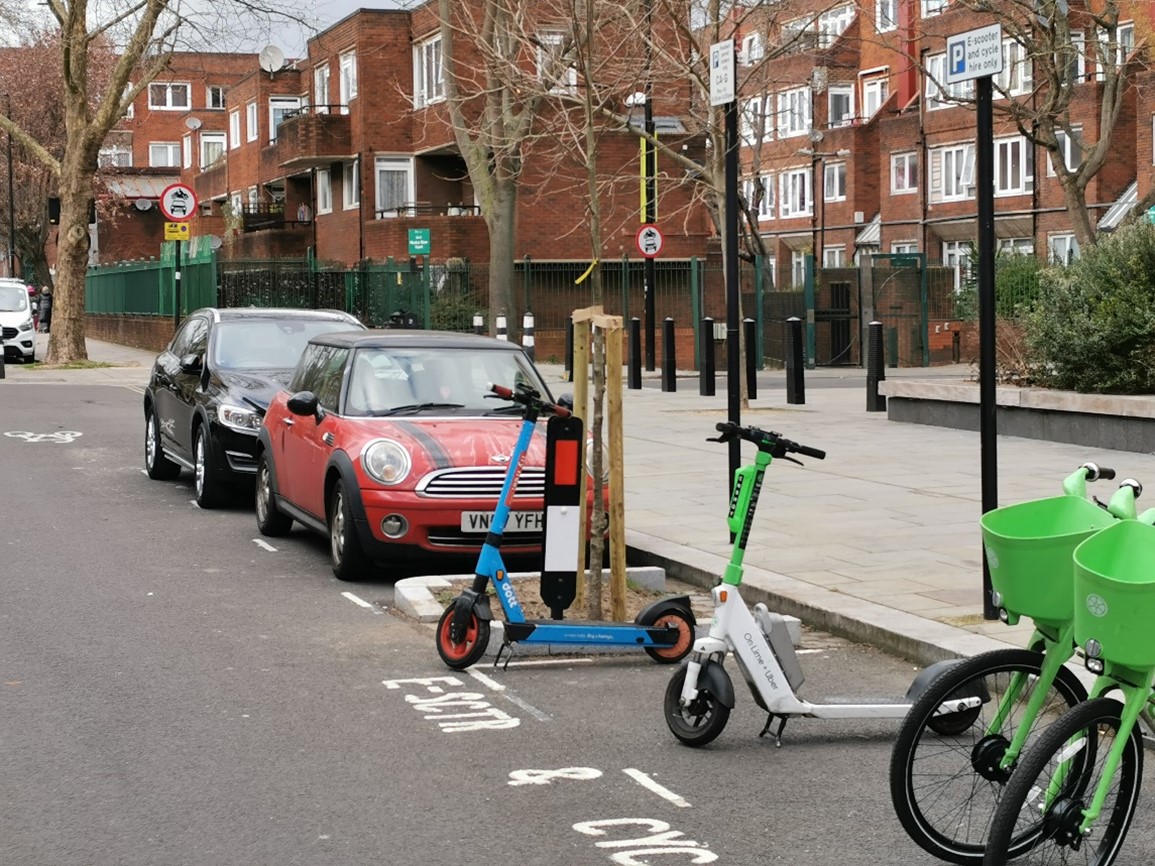 The kerbside is not just for cars but for trees, bikes and scooters, Camden.
The kerbside is not just for cars but for trees, bikes and scooters, Camden.
Such stated ambitions are very familiar. However, what sets this strategy apart are its clear and measurable targets. Here are two examples:
“Street trees every 25m on every street in Lambeth.”
“The Kerbside Strategy will commit Lambeth Council to reclaiming at least 25% of this space from vehicle parking.”
This strategy is about putting people’s needs first. It is not about designing out the car entirely but about re-shaping the kerbside to make other forms of travel safer, convenient and more appealing whether that is on foot or if you push or pedal yourself along.
The recognition of the role that car clubs can play in improving our streets is hugely encouraging. As the strategy states “car clubs reduce the need for people to own their own vehicle, and each car club can replace 10 to 20 private cars.“ That means more space to park a bike, it means more space to place a bench and more space to create new habitats from an insect hotel to a rain garden. There are lessons in this strategy that apply nationwide.
So how can this be delivered?
Step one: Engage the street
“All residents have the opportunity to apply for a parklet on their street, where the use of that parklet supports the kerbside priorities. The process is clear and accessible.”
The Lambeth Kerbside Strategy was developed through community consultation, and it recognises that a collaborative approach to design is essential to the successful delivery of this strategy. Don’t force changes on reluctant neighbourhoods. Let keen residents come to you. An important first step is to work with residents, businesses, councillors, and community groups to establish their priorities for their street or neighbourhood. We often talk about ‘engaging wide’ and ‘engaging deep’ and this can take a range of forms including walkabouts, co-design workshops and online surveys such as our Create Communities engagement tool.
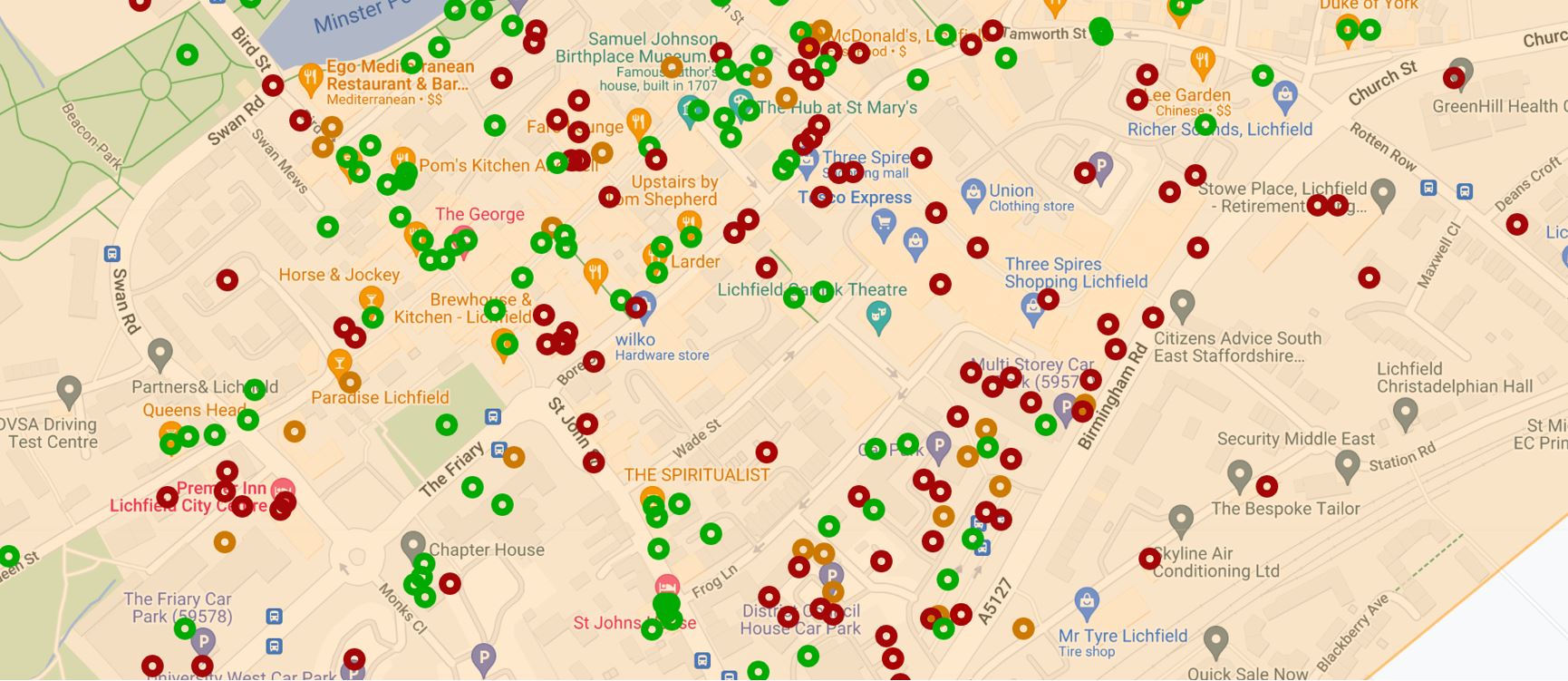
Results from an online consultation for Lichfield town centre highlighting the places people like (green), would like to see improved (orange) and dislike (red). There are clear patterns of resident preferences and dislikes.
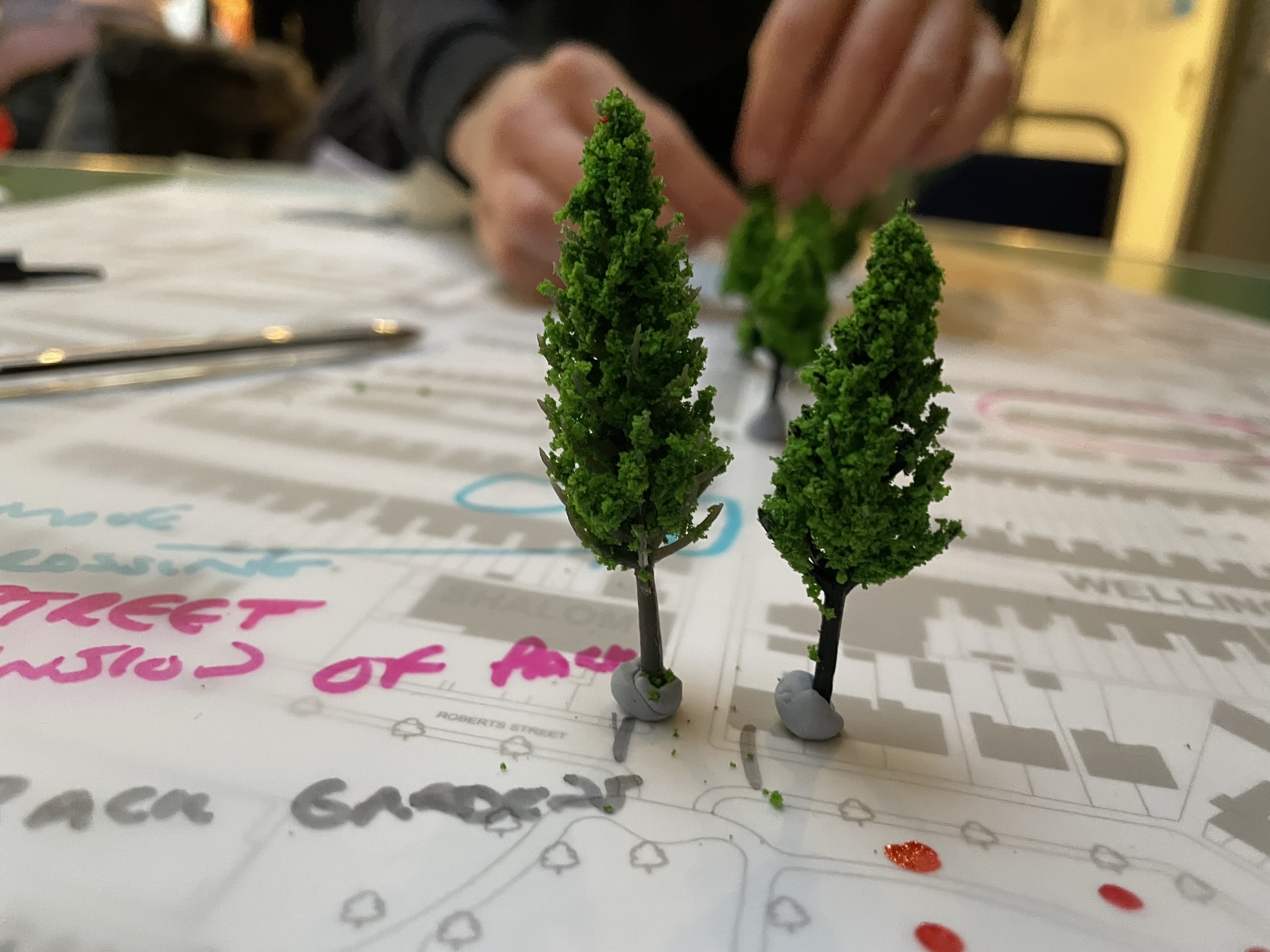
Though online engagement can be an effective way to reach a wide range of people this should always be accompanied by in person events. The more interactive the engagement, the better.
Step two: Visualise the results
It may seem an obvious statement, but visualising changes are an important way of establishing agreement for change. It is generally easier for people to understand and share their thoughts on how a place might look and feel when they see a quick sketch or visualisation. Most find this much easier than commenting on ‘design principles’ or ‘in the abstract’ on maps and 2-D plans. You should get visual and tangible as early as possible in the process to build support, discover concerns and create confidence. Asking people to comment on designs for the first time once they are ‘fixed’ (as is still normal practice in too many councils) suggests that consultation is merely a tickbox exercise and their feedback on design will have little tangible impact.
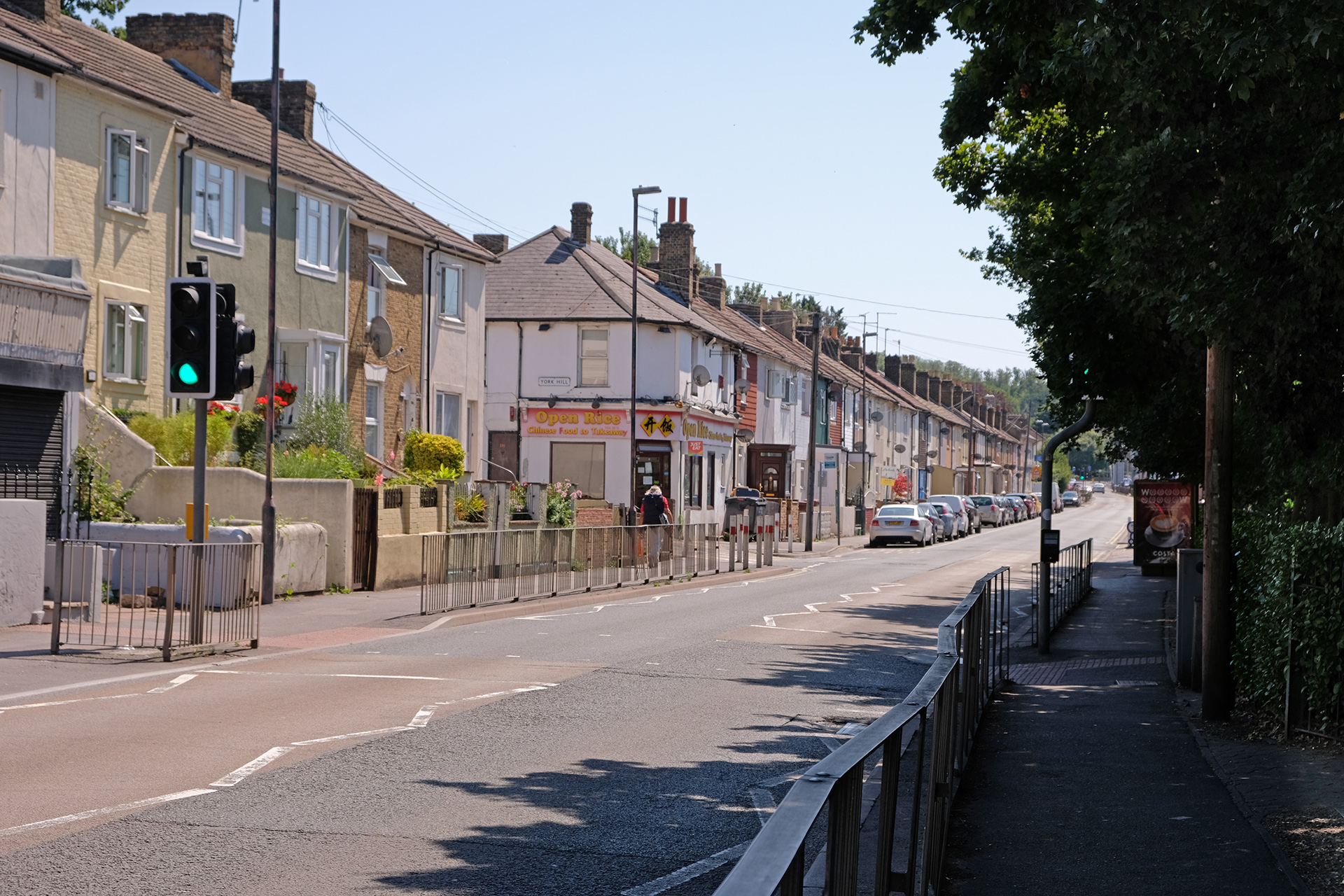
A familiar sight nationwide, a kerbside full of parked cars. Luton Road, Chatham
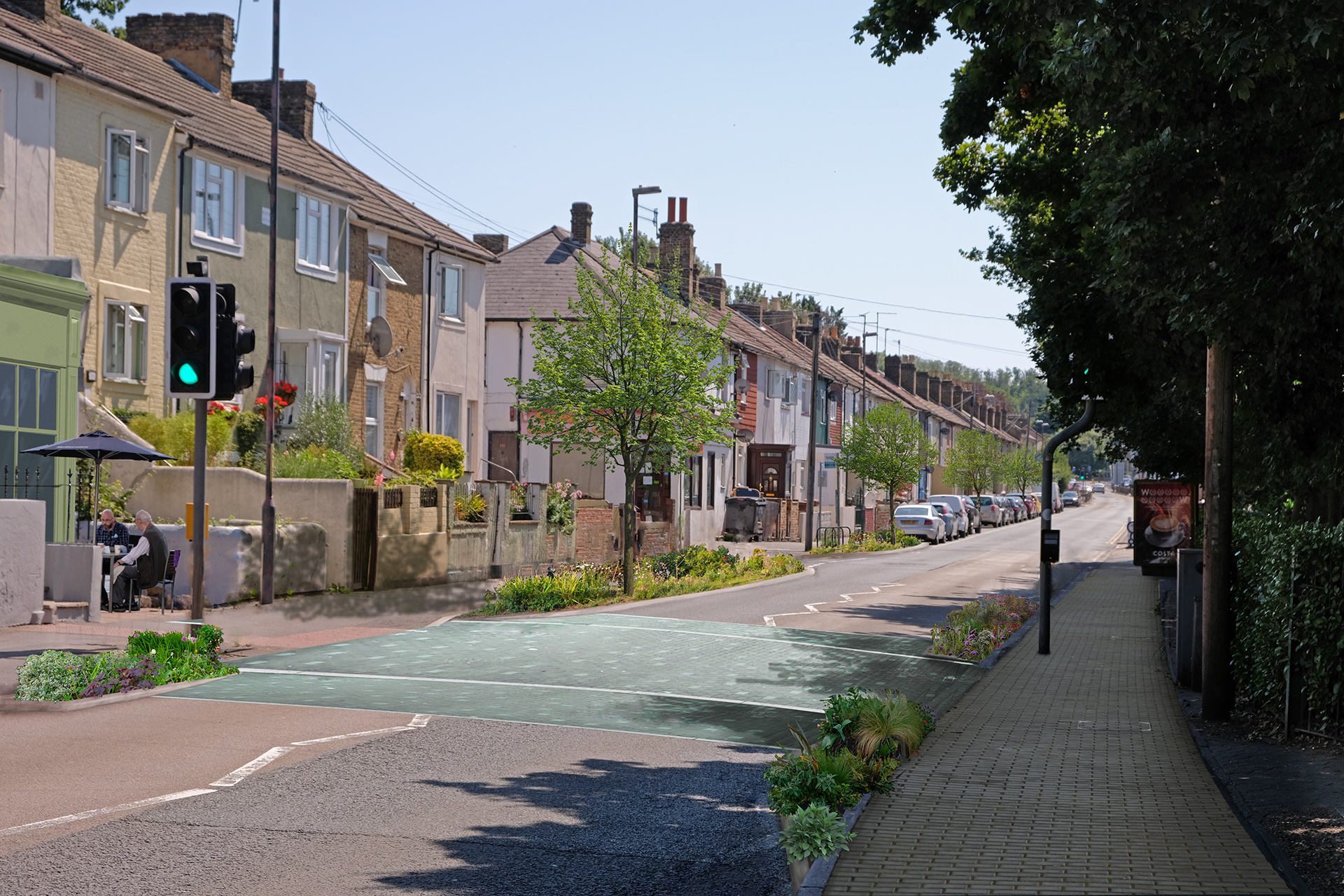
A vision for a greener, safer and more pleasant, Luton Road, Chatham
Step three: work in partnership
Partnership is key to turning a vision for a street into a reality. We know first-hand the critical role that collaboration can play in the physical transformation of their streets as we have seen in projects in Grimsby and Chatham. The long-term success and stewardship of a project depends on creating a positive working relationship and a sense of ownership between the community, council officers and officials. This could be through communal planting days (as here in Grimsby) or engaging local businesses or residents to sponsor a tree or a bike hanger.
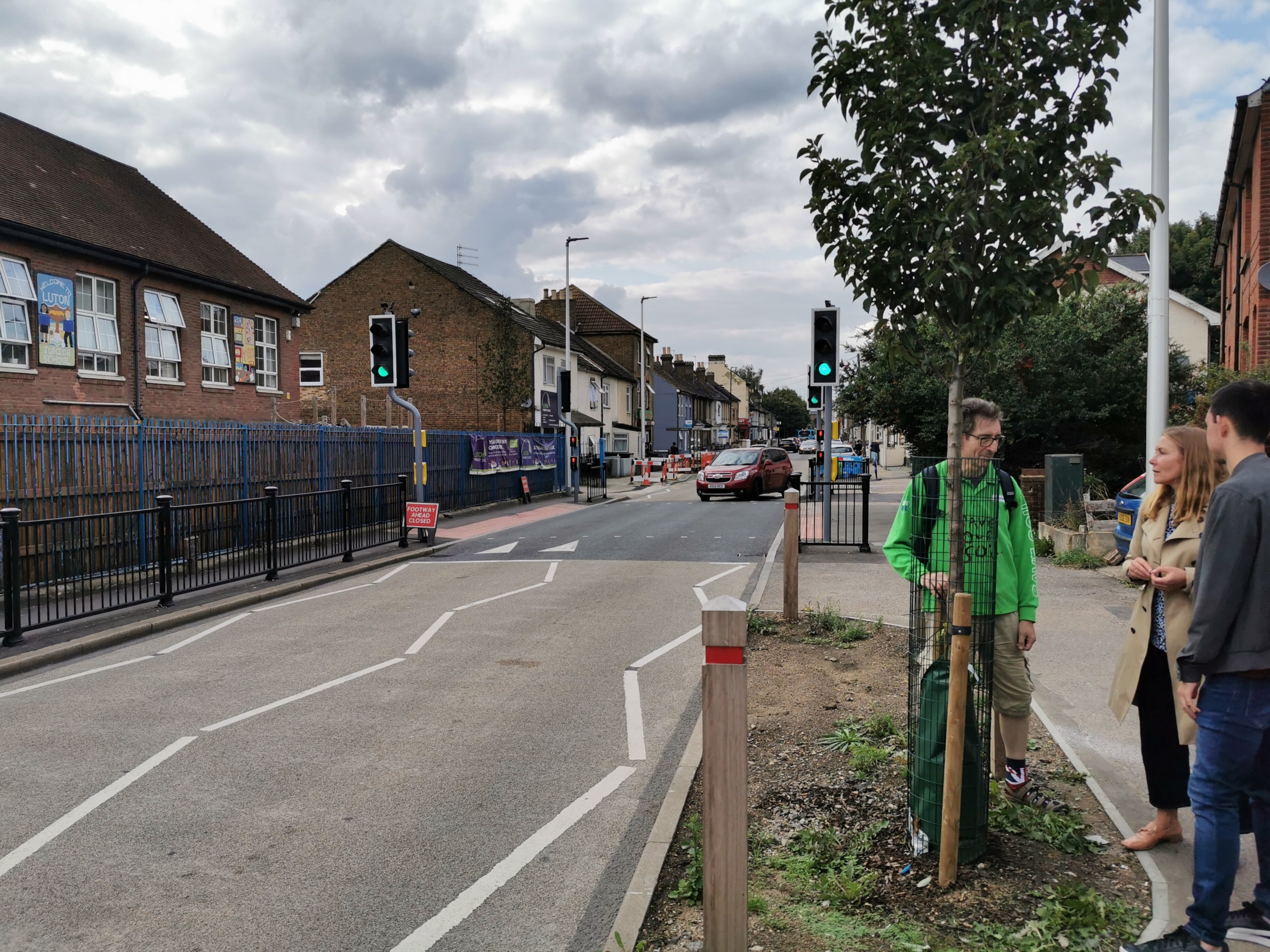
Arches Local have turned the vision for Luton Road into a reality, Chatham.
Lambeth is leading the way
The issues The Lambeth Kerbside Strategy aims to rectify are international challenges. There are streets from north to south that are a sea of tarmac, where cars and bins block the pavement and children can’t play outside. If you live in a Victorian terrace, a 1930’s cul-de-sac, a modernist estate or in an edge of town residential estate you will recognise these issues. However, your neighbourhood and street has the potential to become so much more through these simple, replicable interventions.
“A new tree here, more cycle parking there – the impact of these changes will be worth much more than the sum of its parts.”
At Create Streets we believe the design of streets has a critical role to play in the creation of cities, towns and neighbourhoods that are less polluted, safer and where people can lead happier, greener and more active lives. The principles set out in the kerbside strategy are relevant to streets up and down the country.
Our office is in Lambeth, in the north of the borough. We’re planning to make improvements to our local street, one of London’s “lost” high streets: Lambeth Walk. We’re also working with community groups supporting their greening up work from Chatham to Grimsby
Do please get in touch if you live or work in the borough, or more widely, and if you want to turn this approach to making your streets greener, happier and more beautiful into reality. You have nothing to lose but your tarmac!
George Payiatis is a Senior Urban Designer at Create Streets

